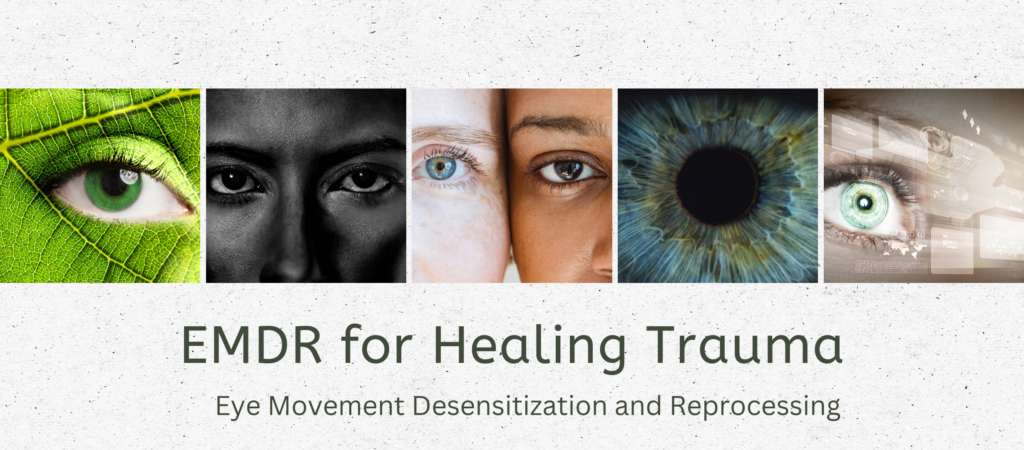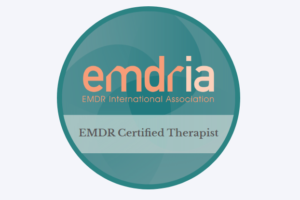
I am EMDR certified by EMDRIA, and I am an EMDR Consultant-In-Training. EMDRIA is a professional association for EMDR practitioners and researchers to seek the highest standards for clinical use of EMDR (EMDRIA.org). I have trained in this process with Laurie Parnell in 2002 and had further training with Deany Laliotis, Gloria Tipton, Rachel Harrison and Carol Miles. EMDR Consultation: Are you a therapist interested in developing your EMDR skills or in becoming certified? Reach out for individual and group consultation.
Eye Movement De-Sensitization Reprocessing (EMDR) is a technique of treatment that is used for processing and lessening the distress of negative memories, emotions, thoughts and sensations. It has often been used with those who have experienced trauma and are suffering from PTSD. However, it is has also been found to be helpful for removing the distress of other negative experiences as well as phobias. Originally the technique used eye movements in which the client would follow the waving of the therapist’s hand. Now other forms are used, such as tapping on the client’s hands, headphones with binaural beats, or a lightbar. The main idea is the creation of bi-lateral stimulation using vision, sensation or hearing.
EMDR therapy helps children and adults of all ages to address a wide range of challenges:
- Anxiety, panic attacks, and phobias
- Chronic Illness and medical issues
- Depression
- Eating disorders
- Grief and loss
- Pain
- Performance anxiety
- Post-Traumatic Stress Disorder (PTSD) and other trauma and stress-related issues
- Sexual assault
- Sleep disturbance
Recent articles on EMDR
- What is EMDR? Understanding the Trauma Therapy Practice
- Curious If EMDR Is An Effective Form Of Therapy? Here’s What To Know.
- ‘One Foot In the Present, One Foot In the Past:’ Understanding E.M.D.R.
When the client is ready, a ‘target’ is chosen, such as a traumatic memory, distressing situation, feeling or a phobia. For the target, the client identifies a distressing image, negative thought, negative emotion, and associated body feelings. The client identifies the level of distress based on a scale of 1-10. The therapist also guides the client to identify a positive thought about themselves, that is counter to the negative thought. This is also scaled for its level of validity or ‘truth’ for the client.
The process begins (of eye movements, tapping, binaural sound beats, or other bi-lateral stimulation) and the therapist checks in with the client regularly. The client can stop the process at any time. Sometimes the fear of distressing memory or phobia is lowered with certain techniques such as the client watching the situation as a distant observer. The content experienced does not need to be shared by the client. The client can simply talk about what has improved or what is still distressing. If the client feels stuck, the therapist can intervene with certain questions that may illuminate a forward path. Gradually the client will find that the original images, thoughts, feelings and sensations have changed and are less distressing. Clients appear to feel empowered by this process.

